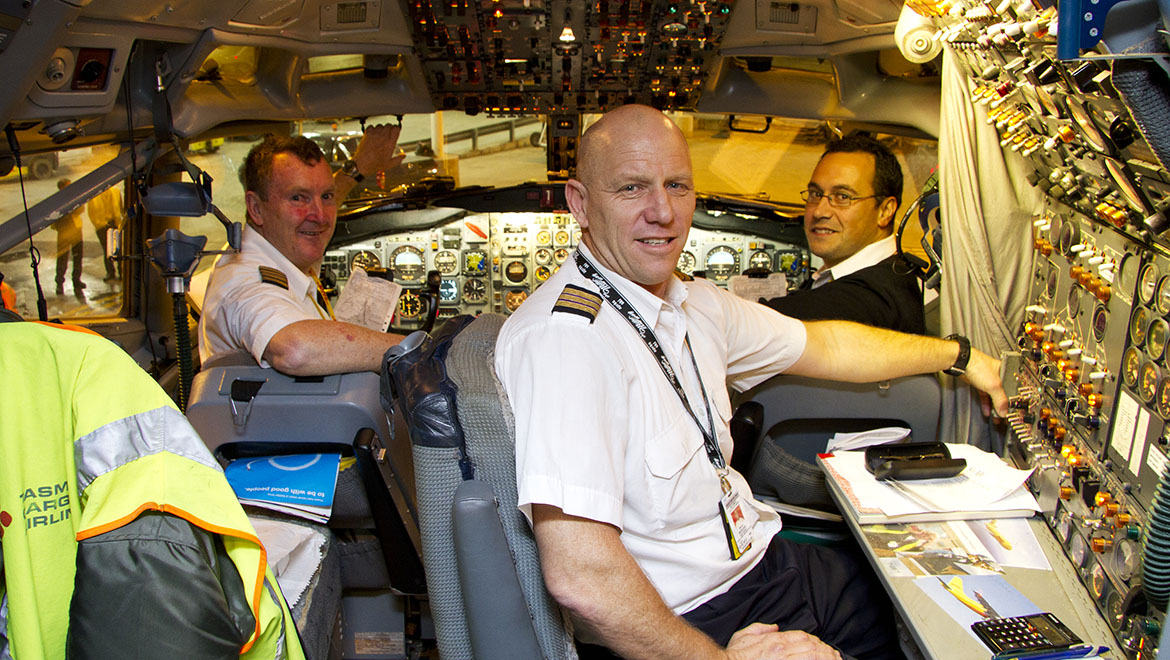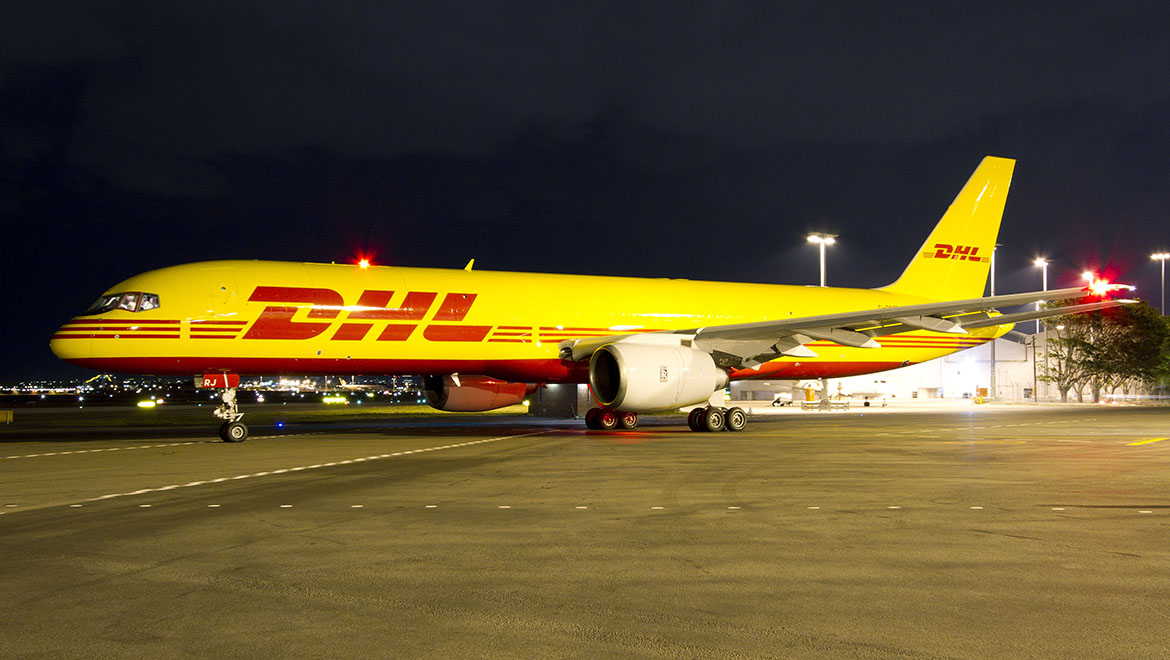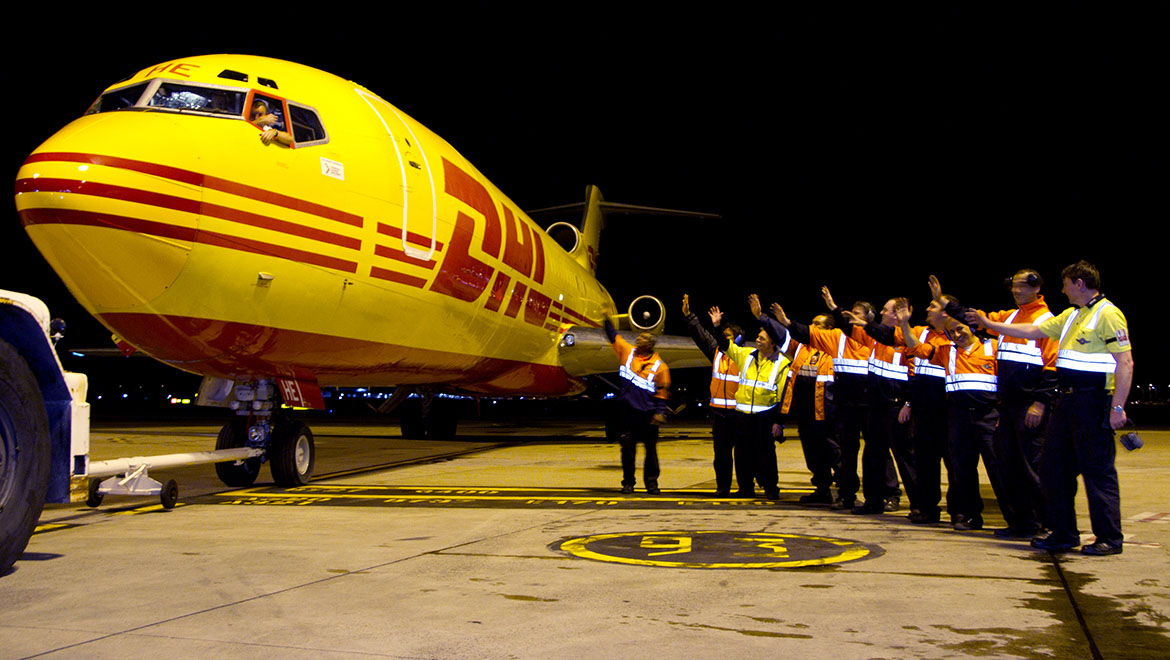This week’s Throwback Thursday feature, from the October 2010 magazine edition of Australian Aviation, looks at the retirement of the last Australian-registered Boeing 727.

August 31 2010 saw the passing of an era as the last Australian registered Boeing 727 departed from Sydney Airport for the final time.
Boeing 727-221F VH-DHE, which has been operated by Tasman Cargo Airlines (formerly Asian Express Airlines) since 1995, was the last operational 727 on the Australian register. With the type now in retirement, so ends the local career of a jet which redefined travel in Australia and was the favourite of many of its pilots.
When the first 727-100s for both Trans Australia Airlines and Ansett-ANA arrived at Essendon Airport in November 1964, they ushered in the jet age for domestic travellers. Powered by three Pratt & Whitney JT8D engines, the type’s jet speed, comfort and range was ideally suited to Australian conditions, and it went on to be the most popular airliner in the country for a number of years. As time went on, the smaller -100s made way for the larger 727‑200s in the 1970s and later -200 Advanced with the increased range of the latter proving useful on a number of longer routes.
During their heyday, 727s formed the backbone of the domestic fleet, and flew in the various colour schemes of Ansett, TAA/Australian Airlines and briefly East-West Airlines (following its takeover by Ansett). A number were also maintained as private jets for the likes of John Elliot, Alan Bond and Robert Holmes à Court during the 1980s and 1990s.

In passenger service, age and new technology caught up with the 727 in the 1990s. Australian Airlines was the first carrier to withdraw its 727s in 1992, replacing them with Boeing 737-400s. Ansett meanwhile soldiered on with 727-200s until April 1997, flying them for a time alongside newer types such as the A320.
Despite their retirement from passenger services, 727s remained in Australian skies for a number of years as dedicated freighters to carry express freight between major centres, predominately on behalf of Australian air Express (AaE) and Ansett Air Freight/Ansett Australia Cargo. This included a number of passenger 727s operated by Ansett which had been converted to freighters.
But the spike in fuel prices which occurred during the mid-2000s, as well as the increasing maintenance issues caused by the age of the aircraft, became a major issue. With reliability decreasing, Australian air Express announced in 2006 that it would begin replacing its National Jet operated 727 Freighters with former Qantas 737‑300s converted into freighters.
In the meantime, HeavyLift Cargo Airlines had started operating a mix of foreign registered 727-100s and -200s on freight runs to the Pacific Islands, although most of these aircraft have now left the country. One 727-100 acquired by Heavylift has remained static at Cairns Airport for a number of years.
Finally, Aviation Australia uses 727‑77C VH-TBS (an aircraft first delivered to Ansett in 1969) as a training aid at its Brisbane Airport base. While still on the VH register, it is unlikely to fly again.

That had left Tasman Cargo’s VH-DHE as the last flying 727 on the Australian register. Built in 1980, DHE was originally operated by Danish carrier Sterling Airways. Converted to a freighter, it was acquired by Asian Express Airlines predecessor Premier Airlines and arrived in Sydney in June 1995.
For most of its Asian Express Airlines/Tasman Cargo career, DHE’s staple work has been overnight freight services between Sydney and Auckland on behalf of DHL Express, while it has also operated freighter services to Noumea and charters carrying various kinds of cargo. During 2007, it also played a role in delivering relief to Papua New Guinea following Cyclone Guba.

“We’ve been carrying the express company’s goods for all that period of time, as well as other types of freight including livestock, horses, alpacas and llamas, cars and motorbikes and various other things,” said Tasman Cargo CEO Ross Howley.
“Effectively, we’ve been the only freighter on the airport over the last 15 years and we specialise on the Tasman.”
“It’s proved to be a great workhorse, particularly for the size of the Tasman sector and its payload capability,” he added.
Keeping the increasingly ageing aircraft in service has not been an easy task. “It’s been a little bit challenging on the maintenance front,” said Howley.
“As time goes by, the availability of licensed engineers has got harder to source. We had a lot of support from Air New Zealand in the early days and we found our own dedicated LAMEs to look after the aircraft.”

Latterly, the aircraft was supported by John Holland Aviation Services, which provided 727 endorsed LAMEs from its Melbourne base. Many of those had gained their licences on the type when Ansett was still operating its aircraft, and subsequently also supported the 727s operated by National Jet. Tasman Cargo has also been able to build up a strong spares list to address aircraft-on-ground issues when they arose.
Despite its years of sterling service, Howley noted that there were a number of factors which would eventually lead to having to part ways with DHE.
“We were always mindful of the fact that the 727 would have a limited lifespan, so we were always forward planning to see what would the next step be,” he said.

“It would either reach a point where it would be economically unviable or through government activity it would be legislated against, or in a third case scenario you would have trouble supporting the aircraft from finding flightcrews and maintenance support.”
Additionally, the persistently high price of fuel combined with the aircraft’s thirsty JT8Ds provided more pressure to replace the 727 with a newer, more efficient type. Indeed, the spiking price of fuel had previously forced TCA to cut a Saturday Sydney-Auckland nearly two years ago.
Despite those pressures, it was noise that has forced the retirement of DHE, and by extension brought to an end the 727 era in Australia. Although the aircraft was once marketed by TAA as the ‘whispering T-Jet’, the hushkitted 727 was labelled as a ‘marginally noise-compliant’ aircraft, and in May 2010 Transport Minister Anthony Albanese announced that such aircraft would be banned from Australian airspace. That ban was originally to come into force from July, but was extended to September 1.

“We were always mindful that this day was coming, but in terms of lead time we were a little bit surprised by the short timeframe of the phase-out period,” said Howley.
“They had signalled it in the White Paper, and we were aware of that. We have had some previous experience with noise and airports, and at the end of the day it became a fait accompli that we would retire the 727 and start looking towards the future.”
That future arrived on September 1 with a Boeing 757 Freighter taking over the run. Initially, Tasman Cargo is wet leasing the aircraft, G-BMRJ, from DHL Air in the UK to allow for a seamless changeover from the 727. This will be only short term until it takes its own 757, which will become the only 757 on the Australian register.
The 757 has seen only limited operation in the region. During the 1989 pilots’ dispute Australian and Ansett each wet leased two 757s for passenger operations, while the type is currently flown by Air Niugini and Royal Brunei Airlines into Australia, and the Royal New Zealand Air Force flies two which replaced its 727-100QCs in 2003.
The only 757 to have been on the Australian register was 757-23APF freighter VH-AWE registered to lessor Ansett Worldwide Aviation Services. This aircraft was stored at Melbourne briefly in the early 1990s before it was placed with a new operator. (Interestingly, this aircraft was operated through most of the 1990s by DHL Worldwide Express, still on the VH register. Sadly, by now registered A9C-DHL, this was the aircraft which had a mid-air collision with a Tu-154 over Germany in 2002.)
In its freighter configuration, the 757 has a number of advantages over the 727. Over the same route, the 757 can carry an additional 15 tonnes of cargo. The aircraft also has a number of similarities with the widebody 767, which should make it easier to find appropriately rated pilots, maintenance engineers and spares.

The newer aircraft will also provide a major jump in terms of operating economics, despite the greater capital costs.
“From a fuel burn perspective, we expect the 757 to be somewhere between 25-30 per cent more favourable on fuel, so that was a big part of the decision,” said Howley.
“It will be a newer, more modern aircraft so the airframe itself will be more expensive, but it’s an investment we think will be a good step forward.”
The company is currently seeking suitable candidate aircraft, with the plan to bring it into service over the next year.
“From what we’re seeing at the moment, the calibre of aircraft around, it looks like we will look to purchase a passenger aircraft and convert it to a freighter,” explained Howley.

Although 757 numbers in the region are limited, Howley says that this should not present any support issues.
“I think it’s something that we’re used to doing on our own. For many years we had the 727 based in New Zealand and we had to become self-sufficient, so I guess we have that culture that understands if you’re going to pick an aircraft type which is not that common you just have to put a little more work into the investment to support it.”
“We see that the 757 is going to be a good aircraft for this part of the world and that it will be as good an aircraft as the 727,” said Howley.

This article originally appeared in the October 2010 magazine edition of Australian Aviation. To read more stories like this, subscribe here.
















Helmut
says:The great thing about the 727 was that it gave flight engineers the opportunity to become pilots and ground engineers to become flight engineers.
Robert oneill
says:I must say, l really enjoyed reading this entire piece.! By quietly & carefully reading through this posting, l was able to answer quite a number of question ld been carrying in my mind for just over 20 years.! I Thank whoever wrote this relevant piece for me. In closing l add with quiet but deep passion & memory of my 1st genuine siting of a 727 in the sky over Melbourne in what would have been mid to late December in 1964. Riding a small push bike home from primary school @ the age of 6, l looked skyward to see my 1st 727,& have never forgotten that special moment 55 years later. ! I also was able to observe the DHL 727’s fly in & out of Sydney airport from June 1998 until December 1999, whilst l was working closely @ St. Peter’s during that period. Finally l loved the noise, smoke, & the “ cut of the 727’s jib” as she came & went. Thanks ? ROBERT in Sydney.